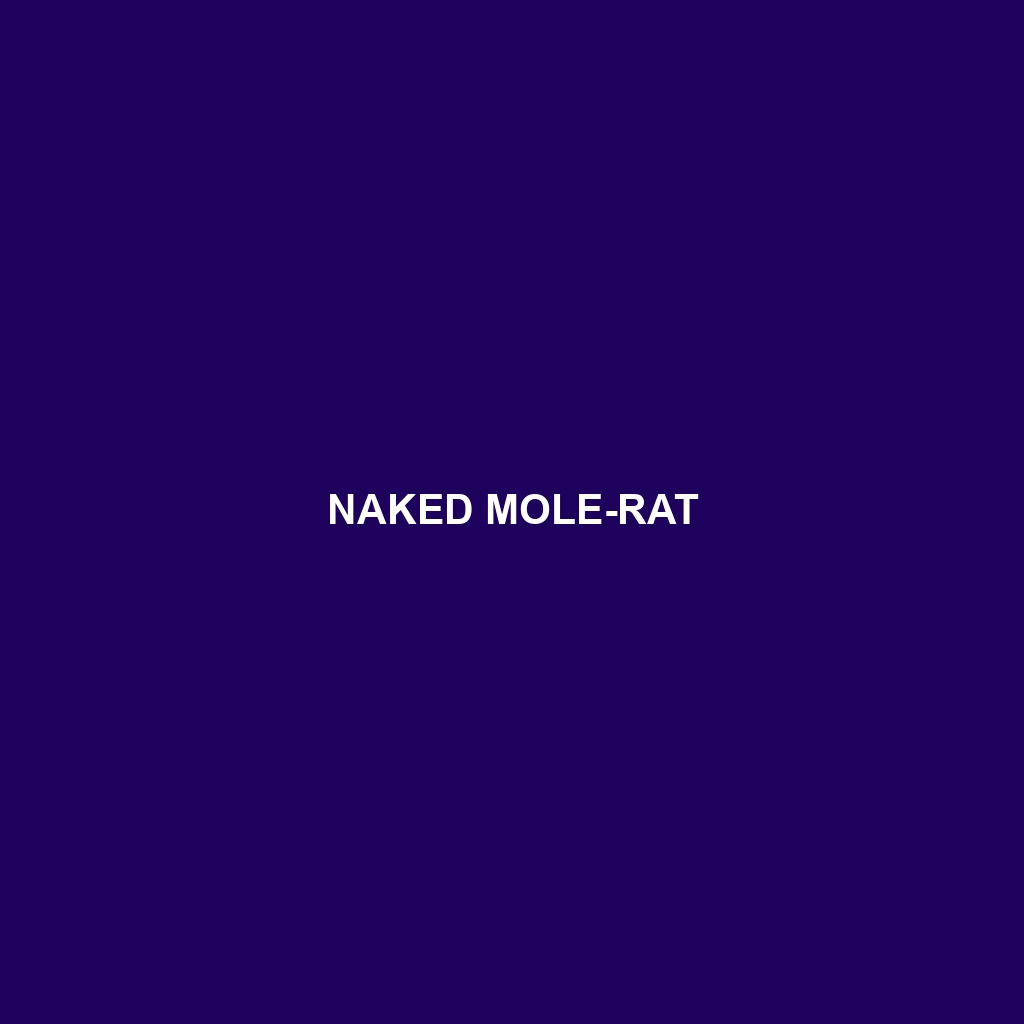Naked Mole-rat Species Description
Common Name: Naked Mole-rat
Scientific Name: Heterocephalus glaber
Habitat
The Naked Mole-rat is primarily found in the arid regions of East Africa, specifically in countries such as Ethiopia, Kenya, and Somalia. These fascinating creatures inhabit underground burrows in sandy soils, where they create complex tunnel systems. Their preference for a subterranean lifestyle helps them avoid extreme temperatures and predators.
Physical Characteristics
Naked Mole-rats are unique in appearance, characterized by their nearly hairless, wrinkled skin which can range from pink to beige. Adults typically weigh between 30 to 35 grams and measure approximately 8 to 10 centimeters in length. Their elongated bodies, large protruding incisors, and nearly vestigial eyes give them a distinctive look. Notably, their lack of fur and specialized physical adaptations make them well-suited for their underground lifestyle.
Behavior
Naked Mole-rats exhibit highly social behaviors, living in colonies that can include up to 300 individuals. They are known for their eusocial structure, where a single queen breeds with a few males while the remaining members perform various tasks, such as foraging and burrow maintenance. Naked Mole-rats are mostly active at night, engaging in cooperative foraging and grooming to reinforce social bonds.
Diet
The diet of Naked Mole-rats primarily consists of underground plant tubers and roots, which they adeptly locate and excavate using their strong teeth. While primarily herbivorous, they occasionally consume dead insects, showcasing a slight variation in their feeding habits. Their ability to survive on a diet low in oxygen and high in carbohydrates allows them to thrive in their challenging habitats.
Reproduction
Naked Mole-rats have a unique reproductive strategy, with a single queen that is responsible for breeding, while other females in the colony may remain sterile. Breeding generally occurs seasonally, and the queen can produce litters of 1 to 27 offspring, which are cared for collectively by the colony. Notably, these pups remain in the burrow and are nurtured until they mature, highlighting the colony’s cooperative nature.
Conservation Status
Currently, the Naked Mole-rat is classified as Least Concern by the IUCN. However, habitat destruction and climate change pose potential risks to their populations in the wild. Continuous research is vital to understanding their adaptability and survival in changing environments.
Interesting Facts
The Naked Mole-rat holds a unique position in the animal kingdom as one of the longest-living rodents, potentially reaching up to 30 years in captivity. Additionally, they are notorious for their resistance to cancer and the ability to survive in low-oxygen conditions, making them a subject of scientific research regarding aging and health.
Role in Ecosystem
Naked Mole-rats play a crucial role in their ecosystem as both prey and contributors to soil aeration. Their burrowing activities promote nutrient cycling and enhance soil quality, benefiting other plants and animals in their environment. As prey, they support the food web, contributing to the diversity of the local ecosystem.
